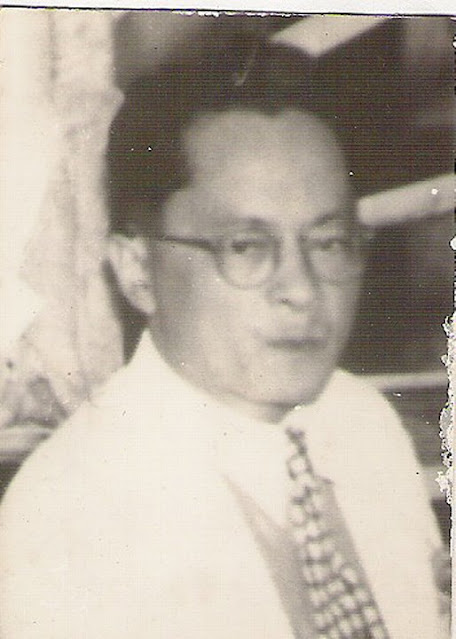Heroism Story of a War Hero Gov. Guillermo Teves Villanueva
We
are celebrating the heroism of every Filipino people and all the unsung heroes
during the Second World War. One of the prominent political figures who
collaborated with the Japanese in Negros Oriental was Guillermo Teves.
Villanueva, a Baisanon native, one can infer that he belonged to a political
clan in Bais City Negros Oriental .His father was Hermenegildo Regis
Villanueva,and Eulogia Pinili Teves both of whom were landed families in Bais
and Dumaguete .
Memong, as Guillermo was popularly called, was also a well-educated individual – getting his Bachelor of Arts degree from Silliman Institute in 1912and Bachelor of Laws from Michigan University in 1918. After finishing his schooling in the United States, Memong returned to the Philippines in 1919; his political career started when he was appointed as councilor of Bais in the 1920s and eventually a member of Congress in 1922. He was re-elected to the position of congressman in 1925, 1928, and 1931, serving four terms in a row. He took a particular interest in the field of education by serving as a member of the Joint Committee of the Legislature, which examined "the school system of the Philippine Islands," and was elected as Chairman of the Committee on Agriculture during his third term. Footnotes from Dr. Justin Bulado Political Collaboration during the Japanese Occupation of Negros Oriental: The Case of Guillermo Z. Villanueva, Wartime Governor (1942-1945)
He was chosen as Negros Oriental's governor immediately before the Second World War, and later served as the country's wartime governor while it was occupied by the Japanese. Villanueva had a challenging job as the governor during the war. First of all, he did not wield any authority because the Japanese army commander held the final say. Instead, his role was to aid in the pacification effort, in which Villanueva and other provincial and municipal officials would visit the various towns in Negros Oriental and try to persuade other officials and civilians to return to the occupied areas. This job was challenging since it gave the impression that everyone had turned into puppets, especially the guerrillas.
Second, the guerrillas were the main source of his opposition because they consistently believed—in most cases—that the governor was a willing participant in the Japanese occupation. Or was he a willing participant?
He made cautious decisions because he didn't want the Japanese to hurt him or his family. At times, he had to play it safe, which was sometimes too safe (he had ten children). When they arrived in Dumaguete, the Japanese policy of attraction was almost immediately put into practice.
Guillermo Villanueva's legacy is a patchwork of active and passive cooperation. His steadfastness in working with or for the Japanese, particularly during the province's pacification operation (i.e., attempting to persuade USAFFEs, guerrillas, and civilians remaining in the hinterlands to return to the occupied areas), led many to assume that he was an active collaborator. Additionally, he took a more cautious approach to dealing with the guerrillas, choosing to play it safe by avoiding contact with or involvement with them. He was highly disliked among the guerrillas due to his membership in the KALIBAPI and concurrent representation of Negros Oriental in the National Assembly; also, his appearance enhanced his reputation as a traitor. ( Foot notes from Dr. Justin Bulado Political Collaboration during the Japanese Occupation of Negros Oriental: The Case of Guillermo Z. Villanueva, Wartime Governor (1942-1945)
Lolo
Memong was Killed by the Japanese as he wanted to save his people, country, and
family. This is his Heroic Story.
Historical Information :Mr. Penn T. Larena -Villanueva Clan Family Historian




Comments
Post a Comment